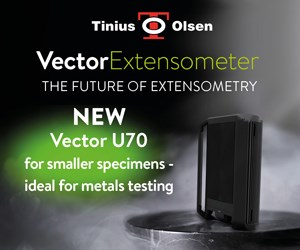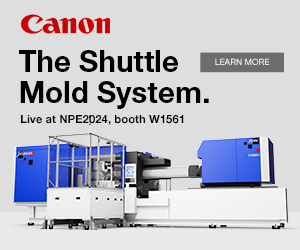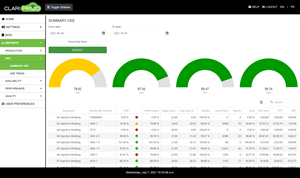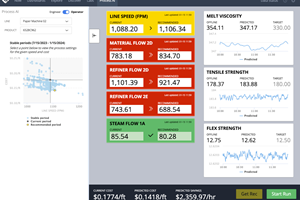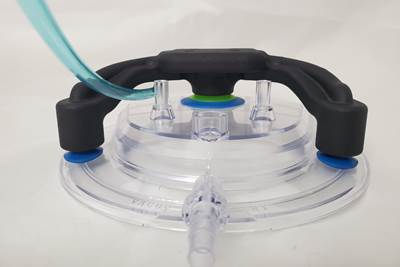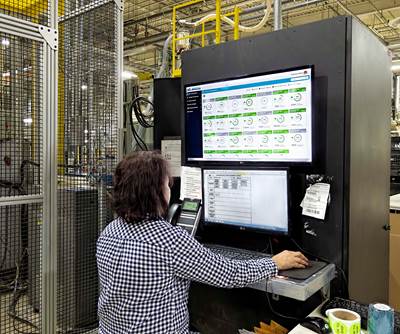For Novatec and Machine Sense, the Focus Is the Factory of Today
Interconnectivity alone will not raise the bar on productivity…and profitability, says Bessemer.
Big data…the Internet of Things…Industry 4.0…The Factory of the Future. At NPE2018 this week, those and similar terms are front and center in dozens of exhibitors’ booths. But for Novatec and MachineSense (Booth W3729), the focus at the show is far more about technology aimed at solving the problems of today’s plastics processing plants.
Conrad Bessemer, president and CEO of Novatec, a licensee of predictive-maintenance firm MachineSense, puts it like this: “Conversations with multiple processors and recent industrial surveys reveal there is confusion, skepticism and avoidance of Industry 4.0 by users, and it still remains a term used by suppliers and not by processors. At the root of Industry 4.0 is interconnectivity to create smart industrial machinery. However, the problem is that equipment life cycles are relatively long, and it could be years or decades until overall equipment in a factory is connected to each other or its own network.
“Of course, there will be some advantages to machinery and processes being connected in terms of production control: how much resin is bought, how much resin is consumed and shipped, etc. But overall, many processors wonder about ‘what’s in it for them?’ Will they make more money? How will they make more money if they invest in new 4.0 equipment?
“From everything we’ve seen, most suppliers are not addressing this perspective at all. They seem to have adopted the position that they know best—that Industry 4.0 as mandated in Europe is the best way to be more efficient and productive—so therefore, it should be adopted automatically by everyone. But observers also know that despite globalization, the U.S. especially is still a unique and strongly independent market that has its own ideas and ways of doing things. That’s not to say that 4.0 is a bad idea; connecting everything is a digital system makes a lot of sense, but this will take time. And in the meantime, what can be done to make processors more productive and profitable?”
In Bessemer’s view, Industry 4.0 will be adopted gradually, and just like in the smart home, machinery will increasingly be connected. With this connectivity, there will be the opportunities for total system setup rather than individual machine setup—making a system more bullet proof, he believes. “However, at this point those who talk about Industry 4.0 don’t seem to promote higher levels of productivity. Everything’s connected, but so what? It’s cool for sure, but for the most part it doesn't improve operations. And that’s a big concern about Industry 4.0 in its infancy as well. So just like the adoption of the smart home technology, the adoption of Industry 4.0 smart factory equipment has also been slow.”
According to Bessemer, ultimately the U.S. will put its own spin on Industry 4.0 “in a series of steps, not one sudden economic waterfall.” He states, “From our point of view, the way to do this initially is certainly to promote the connectivity of equipment, but what is more important is to find economic justification to connect and monitor equipment, rather than some vague notion of simply being on a digital platform.”
The Novatec and MachineSense technology displays at NPE2018 certainly endorse the notions of Industry 4.0 and 5.0 and the importance of data and “smart” machinery. “But what is more important is how to make money with today’s factory today using technology to improve productivity and profitability,” Bessemer states. “The area that we focus on is improving uptime and avoiding unplanned downtime. If equipment uptime is better, labor utilization is better and so is production—using the same people and the same equipment you have today.”
At it’s booth, Novatec and Machine Sense are focusing on technology solutions that predict when a machine is going to fail and provide plant personnel with “actionable advice” on what to do about it. “Our primary focus is to work with manufacturers on the important process systems that ‘power’ their plant,” Bessemer states. “Without systems such as vacuum, compressed air, dehumidified air, chilled water, HVAC, electrical power and more, none of the other machines in the factory or the process itself can function. These systems are the lifeblood of the factory and are the ones that first should be monitored to assure day-to-day functionality. Today these sensors constantly ‘listen’ to key assets and components to detect changes long before the machine controller picks them up. Then once the basic infrastructure/utility systems of the factory are covered, you can look at using the same sensor technology to monitor process equipment that is powered by or reliant on the other systems such as power, chilled water, vacuum or air.
“That’s how we improve the world and the factories we live in today—Factory 3.0,” Bessemer states. “That’s how we can improve productivity, by increasing uptime with the equipment we have today. That’s how we can squeeze every ounce of profitability and productivity out of today’s equipment today. And of course, we encourage the investment in new equipment that can be interconnected—and hopefully suppliers will also add component sensing systems within this specification so that the equipment becomes more and more reliable. Interconnectivity alone is not the answer to improved profitability and productivity.”
Related Content
Making the Circular Economy a Reality
Driven by brand owner demands and new worldwide legislation, the entire supply chain is working toward the shift to circularity, with some evidence the circular economy has already begun.
Read MoreReal-Time Production Monitoring as Automation
As an injection molder, Windmill Plastics sought an economical production monitoring system that could help it keep tabs on its shop floor. It’s now selling the “very focused” digital supervisor it created, automating many formerly manual tasks.
Read MoreAbsolute Haitian Brings Next Generation of Presses to Orlando
Absolute Haitian says Generation 5 of the servo-hydraulic Haitian and electric Zhafir machines lines emphasize efficiency, performance and intelligence.
Read MoreUse AI, Machine Learning to Take Variability Out of Manufacturing
Variability has always created insurmountable challenges for manufacturers. However, in the last decade, impact has been more painful due to a lack of experienced workforce. By leveraging technological advancements, particularly in AI, manufacturers can gain a transformative competitive advantage in both cost reduction and workforce development.
Read MoreRead Next
Beyond Prototypes: 8 Ways the Plastics Industry Is Using 3D Printing
Plastics processors are finding applications for 3D printing around the plant and across the supply chain. Here are 8 examples to look for at NPE 2024.
Read MorePeople 4.0 – How to Get Buy-In from Your Staff for Industry 4.0 Systems
Implementing a production monitoring system as the foundation of a ‘smart factory’ is about integrating people with new technology as much as it is about integrating machines and computers. Here are tips from a company that has gone through the process.
Read MoreFor PLASTICS' CEO Seaholm, NPE to Shine Light on Sustainability Successes
With advocacy, communication and sustainability as three main pillars, Seaholm leads a trade association to NPE that ‘is more active today than we have ever been.’
Read More

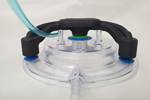
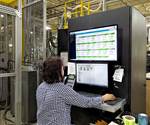

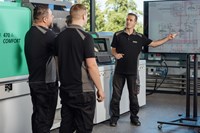
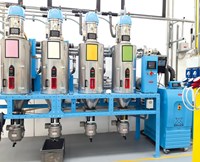
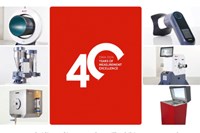
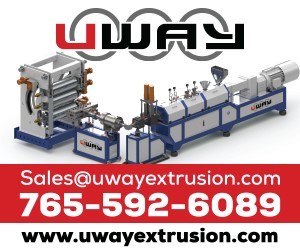
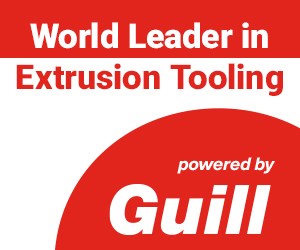
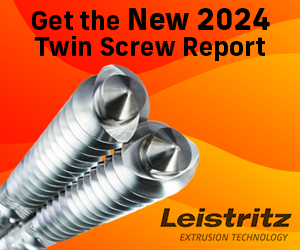
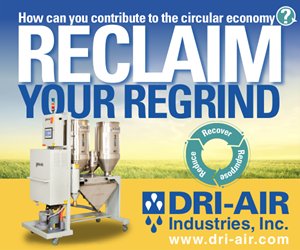
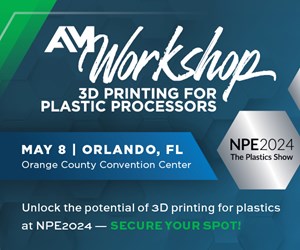

 (2).jpg;maxWidth=300;quality=90)

